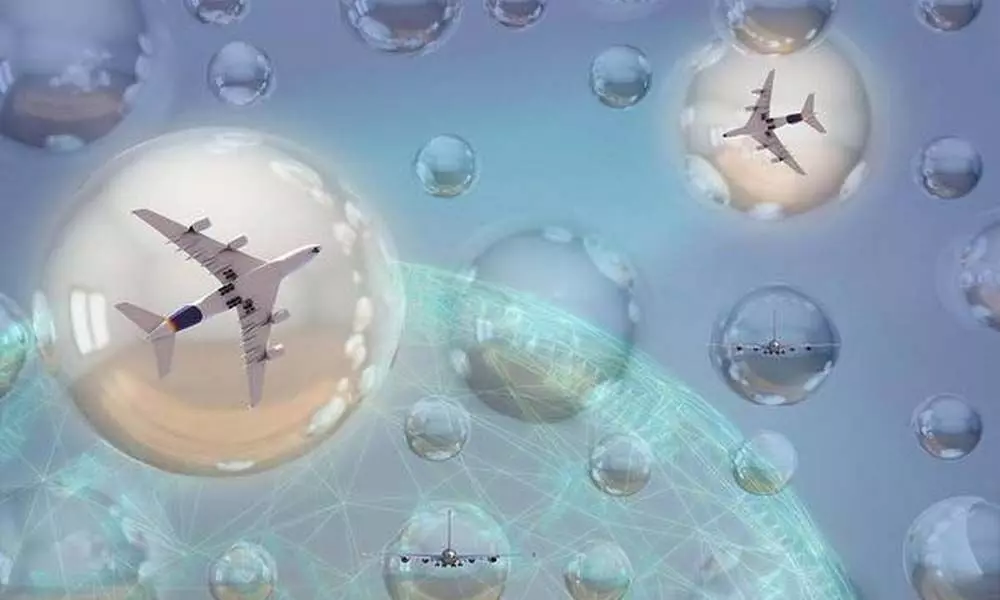Aviation sector going high tech to beat Covid blues
Air travel still dominates the international transportation of goods and people, but a lack of investment in alternative energy and storage has made it increasingly conspicuous in an energy-constrained world
image for illustrative purpose

The International Civil Aviation Organization (ICAO) estimates a loss of $370 billion gross passenger operating revenue for the year gone by. As per IATA (International Air Transport Association), a decline of about 60 per cent in world total passengers during 2020 has been observed and the airline industry alone is expected to have lost $118.5 billion.
Look up in the sky and, at any given moment, there are 9,728 planes carrying 1,270,406 passengers, and they compete for airspace with cargo, business, and privately piloted planes and now with drones, rockets, spacecraft, and all manner of novel aircraft types. Maintaining safety and security during a time of fast-changing technologies, climate change, cybersecurity threats, metastasizing terrorism, volatile fuel prices, and the fierce competition of 'open skies' presents a formidable challenge to ICAO's 193 contracting states and the 36-member Council which serves as its governing board. The record speaks for itself. Four and a half billion passengers on international trips demonstrate their confidence in this record.
Yet, maintaining an outstanding safety record, facilitating a modern and efficient global air navigation system, and 'leaving no country behind' present enormous challenges, as well as great potential, in today's technology revolution in which 2,000 satellites are launched annually, the transformation to digital communication is accelerating, forecasts project a doubling of traffic in 20 years, and the sky is increasingly cluttered with unmanned aircraft.
In India, airlines were allowed to fly 33 per cent of their declared capacity for the season and gradually increase it up to 80 per cent by the end of the year. Along with calibrated opening, the ministry also made airlines adhere to minimum and maximum price floors. This action was warranted to protect consumer interest and to ensure that the dominant airlines did not sell the tickets below cost to drive away weaker competitors. The crisis of an abrupt surge in cancellation of tickets and demand for refund by the passengers due to uncertainty of travel and extension of lockdown was dealt effectively by the Government. A balanced stand was taken before the Judiciary (in a few court cases) to protect the interest of the passengers and bargain time for airlines to improve the cash flow.
Passenger capacity is poised to reach about 50 per cent of the pre-Covid level. Domestic airlines have enhanced their cargo capacities and have almost reached the level of normalcy. Considering the huge demand, air cargo drivers are steering strong.
However, not all is lost. If we are to look for silver linings, the pandemic has forced both the industry and the travelling public to focus on what is truly important. Out of adversity comes opportunity and the aviation industry, like many others, shows that companies that innovate, think creatively and harness technology to take on seemingly insurmountable challenges will ultimately emerge victorious. Indeed, the industry can accelerate its efforts to meet the net-zero emissions and sustainability goals by utilizing technologies and raw materials that are already available.
The aviation industry is known for its resilience. Airlines have quickly adjusted to different levels of demand, suppliers are launching new solutions to keep passengers safe and airports are investing in biometrics such as facial recognition to enable a contactless passenger journey.

